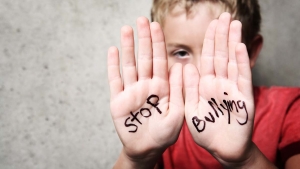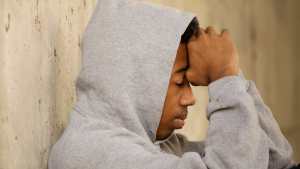10min read

10min read
Cyberbullying is any form of bullying which takes place online or through smartphones and tablets. Online bullying seems to be everywhere, and you do not need to look too far to spot negative comments, posts, etc. Most young people will experience it or see it at some time which is a huge worry for parents and carers. The nature of online bullying is that it can become viral very quick and can happen so fast. Although social sites, video apps, gaming sites such as Tik Tok, Xbox Live, Instagram, YouTube, Snapchat can be great fun and a positive experience for its users, but what do you do when things go wrong?
There are many ways of bullying someone online and for some it can take shape in more ways than one. Some of the types of cyber bullying are:
Harassment - This is the act of sending offensive, rude, and insulting messages and being abusive. Nasty or humiliating comments on posts, photos and videos on social media sites, chat rooms and gaming sites.
Denigration – This is when someone may send information about another person that is fake, damaging and untrue. Sharing photos of someone for the purpose to ridicule, spreading fake rumours and gossip. The photos can also be altered for the purpose of bullying.
Flaming – This is when someone is purposely using extreme and offensive language and getting into online arguments and fights. They do this to cause reactions and enjoy the fact it causes someone to get distressed.
Impersonation – This is when someone will hack into someone’s email or social networking account and use the person's online identity to send or post vicious or embarrassing material to/about others. They may also create fake accounts to cause hurt and humiliation.
Outing and Trickery – This is when someone may share personal information about another or trick someone into revealing secrets and forward it to others. They may also do this with private images and videos too.
Cyber Stalking – This is the act of repeatedly sending messages that include threats of harm, harassment, intimidating messages, or engaging in other online activities that make a person afraid for his or her safety. The actions may be illegal too depending on what they are doing.
Exclusion – This is when others intentionally leave someone out of a group such as group messages, online apps, gaming sites and other online engagement.
The worst thing about social networking sites and messaging apps is that anything nasty posted about you can be seen by lots of people and these posts can go viral and be shared by so many people within minutes. The most vicious gossip and rumours are often spread by people who were once your friends so it's important to consider whether you trust someone before you do share your very personal information. Posting false and malicious things about people on the internet can be classed as harassment. If you find something online, it is important ttake a screenshot of this as you may need this for evidence so you can report this. Seek support from family or friends so they can help you get this stopped too.
Anyone who makes threats to you on the internet could be committing a criminal offence. It's against the law in the UK to use the phone system, which includes the internet, to cause alarm or distress. It could also be against the 1997 Harassment Act. If threats are made against you then it's essential you confide in someone you trust so that they can help you make a complaint to the police. Take a screenshot for evidence as this will be needed and whatever else that is relevant. Let family and friends know that you are experiencing threatening behaviour so you can take measures to keep safe. If you are at school or college, please let your teaching staff know as soon as possible.
Social media is a great way of sharing things with your friends and having fun. But if things turn nasty, it is important to take a screenshot and then block the people responsible. As tempting as it is to retaliate, it is best not to do so as this can further escalate a situation. Read our advice on bullying on social networks to find out how to remove comments, report abuse and, keep safe online and get help from the social media providers.
It's easy to save any pictures of anyone on any site and upload them to the internet. Make sure that you have the person's permission to take a picture and if you want to use it online, they are happy with you to share it. Be wary of tagging and hashtags as this will send the picture out to a wider audience then you may have originally intended. Don't upset people and then upload their pictures for other people to have a laugh. That could be harassment. Don't digitally alter pictures of people either because what you think is funny may be offensive to other people. Don't let anyone take pictures of you that might embarrass you.
If you post abuse about anyone online or if you send threats, you can be traced by the police without any difficulty. Every time you visit a website or make a posting, your internet service provider has an electronic note of your activity.
Keep safe by using unusual passwords. Use a combination of letters, lowercase, uppercase, symbols and numbers. Don't use any part of your name or email address and don't use your birth date either because that's easy for people who know you to guess. Don't let anyone see you signing in and if they do, change the password as soon as you can. Make sure that you turn your locations settings off and set your account to private.
If you are using a public computer such as one in a library, computer shop, or even a shared family computer, be sure to sign out of any web service you are using before leaving the computer so that you can protect your privacy.
Think twice before you post anything online because once it’s out there you can’t take it back. It is easy for any comments or posts you make online to be taken out of context and these could be damaging to you in the long term. Read more about digital footprints and how this can affect your life both online and offline.
If you would like further support and advice, call our helpline on 0808 800 2222 or email us at askus@familylives.org.uk. You can talk to us online via our live chat service, which is open, Monday to Friday between 10.30am and 9pm. You may find it helps to find out how other parents and carers have coped with this on our online forums. We also have a range of free online parenting courses that can help through the ages and stages of parenting.
If you've experienced or witnessed harm online, Report Harmful Content can help you to report harmful content online by providing up to date information on community standards and direct links to the correct reporting facilities across multiple platforms.
True Vision tackles all forms of hate crime and will give you information on content which indicates hatred and how to report it.


Leaflet on bullying
We're here if you need to talk. Please print our poster and share with your friends, family and colleagues. If you have permission to do so feel free to place this poster on community notice boards. Thank you.









-1.png?t=1730379831)


-1.png?t=1730379831)

